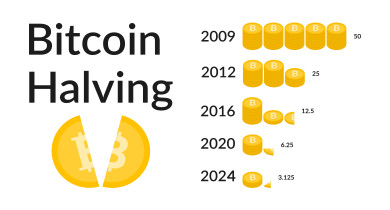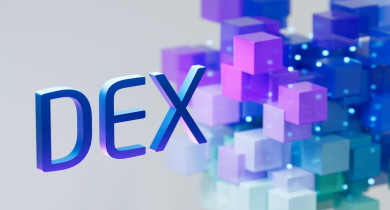
What are BRC-20 Tokens on Bitcoin? How Pepe Ruined BTC Transaction Fees
BRC-20 tokens emerged in March 2023, implementing the Ordinals protocol on the Bitcoin network. During the first quarter of that year, Bitcoin experienced a surge in value, partly driven by the excitement surrounding the Bitcoin Ordinals protocol. This protocol introduced the ability to "mint" Bitcoin NFTs by inscribing data onto a satoshi for the first time, thereby bringing non-fungible tokens to the Bitcoin network. However, this innovation also caused network congestion.
BRC-20 Tokens, Explained:
The BRC-20 token standard is an experimental fungible token built using Ordinals and Inscriptions and stored on the Bitcoin base chain. The deployment, minting, and transfer of tokens are achieved through ordinal inscriptions of JSON data.
Unlike the traditional token standards found on Ethereum's EVM chains, which utilize smart contracts to manage token standards and their rules, BRC-20 tokens employ a different approach. They rely on storing a script file in Bitcoin to associate tokens with satoshis, enabling their transfer between users.
The creation of the BRC-20 token was credited to the Twitter user @domodata on March 8, 2023. While the name is a playful nod to Ethereum's ERC-20 token standard, BRC-20 tokens cannot interact with smart contracts like their Ethereum counterparts.
Despite their experimental nature, BRC-20 tokens offer an intriguing use case for tokens on the Bitcoin blockchain. They address the historical absence of fungible tokens on Bitcoin due to the lack of smart contract functionality.
BRC-20 Tokens vs. ERC-20 Tokens:
BRC-20 tokens utilize the Ordinals protocol to inscribe data onto the Bitcoin network. This protocol enables users to create digital assets in various forms such as text, images, audio, or video and inscribe them onto a satoshi. Once inscribed, these assets can be traded or swapped like any other token on the peer-to-peer Bitcoin network.
While BRC-20 tokens may sound similar to ERC-20 tokens based on Ethereum, they have notable distinctions. Firstly, BRC-20 tokens are issued on the Bitcoin network rather than Ethereum. This means they benefit from Bitcoin's proof-of-work security mechanism, as opposed to Ethereum's proof-of-stake mechanism. To mint and exchange BRC-20 tokens, a Bitcoin wallet like UniSat Wallet is required.
Secondly, BRC-20 tokens offer fewer features compared to ERC-20 tokens. The Bitcoin base layer has inherent limitations that prevent smart contract functionality. Consequently, BRC-20 tokens cannot be utilized in applications such as decentralized exchanges or borrowing and lending protocols.
Market Outlook for BRC-20 Tokens:
Despite their growth, the number of BRC-20 tokens in circulation on Bitcoin is currently much smaller compared to the vast number of ERC-20 tokens on Ethereum. The market capitalization of ERC-20 tokens on Ethereum reaches hundreds of billions of dollars, while BRC-20 tokens stand at $17.5 million. This difference is not surprising given that the ERC-20 standard was proposed in 2015, whereas BRC-20 is a recent development.
Attempts to introduce fungible token issuance on Bitcoin's base layer have been made in the past, such as the Colored Coins protocol in 2012. However, these initiatives failed to gain traction due to high transaction fees and programmability limitations, leading users to explore Ethereum.
BRC-20 tokens represent a new era of experimentation for fungible tokens on Bitcoin, similar to how Ordinal NFTs expanded Bitcoin's role as a development platform.
As an experimental initiative, the tooling surrounding BRC-20 tokens is still in its early stages. For example, Unisat Wallet, a prominent BRC-20 wallet, experienced a compromise on April 23, 2023, and the team is actively working to address the issue and restore affected users' funds.
It's important to note that BRC-20 tokens are still in their infancy, and various issues have been identified and resolved within the past 30 days. As the first provider of BRC-20 wallets and marketplaces, UniSat is continuously tackling numerous challenges while pushing forward with improvements.
The initial token contract deployed on the BRC-20 standard was for the "ordi" token, with a maximum of 1,000 tokens per mint and a total supply of 21,000,000 tokens. Ordinal wallets like Unisat swiftly developed tools to support the BRC-20 standard, resulting in the minting of all 21,000,000 ordi tokens within 18 hours. Additionally, there were pending mints for an additional 1,500,000 ordi tokens that exceeded the limit.
In summary, BRC-20 tokens represent an exciting development in the realm of Bitcoin-based tokens. They allow for the creation of fungible digital assets on the Bitcoin blockchain, potentially impacting the Bitcoin NFT market. However, it's essential to acknowledge that BRC-20 is still in its experimental phase and should not be considered the definitive standard for Bitcoin-based tokens.
Comparisons between BRC-20 and Ethereum's ERC-20 tokens reveal differences in the underlying blockchain and the capabilities they offer. BRC-20 tokens operate on the Bitcoin network, benefiting from its proof-of-work security mechanism, while ERC-20 tokens rely on Ethereum's proof-of-stake mechanism. Moreover, BRC-20 tokens have fewer features compared to ERC-20 tokens due to Bitcoin's inherent limitations in smart contract functionality.
While BRC-20 tokens have made notable strides, their market presence is currently overshadowed by the vast number of ERC-20 tokens on Ethereum. Continued innovation and widespread support from the Bitcoin community may lead to further advancements and improvements for BRC-20 tokens.
As with any experimental endeavor, the tooling surrounding BRC-20 tokens is still in its early stages, and challenges may arise. However, the ongoing exploration of fungible tokens on the Bitcoin blockchain demonstrates a commitment to pushing the boundaries of what is possible within the Bitcoin ecosystem. With further development and refinement, BRC-20 tokens could carve out a unique space in the world of digital assets and tokenization on the Bitcoin network.




